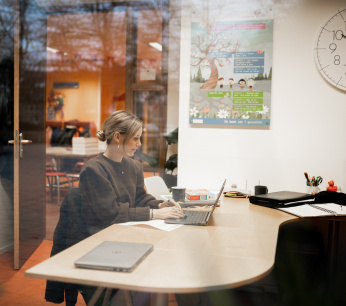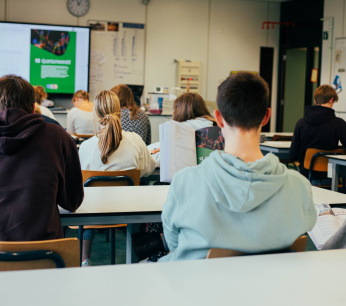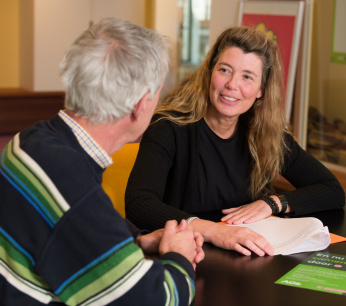Six tips on developing teaching materials
Who owns the teaching materials that teachers develop themselves? From the employer, as the judge recently ruled in a case of a higher vocational education teacher against Fontys, but things can also be done differently. The Education magazine lists six tips.
Use copyright law
To work is to exchange: the employee provides labour, the employer provides wages in return. Creative work is more than a product, it has a personal signature. In principle, teaching material therefore falls under the Copyright Act, which protects intellectual property and gives the 'maker' the right to decide what may or may not be done with it. Essential exception: if someone makes such a creative work within an employment contract, the same Copyright Act transfers the rights of the creator to the employer, unless the teacher and school agree otherwise in advance
Know who you work for
Everything about lessons falls under your teaching appointment. Your own additions to the teaching method are part of your professional space, which the employer may expect you to fill. This applies to choosing films, bringing craft materials or making a digital presentation.
It can be different if you produce something for your entire team, or for several programs within your institution. “When I wrote teaching materials for my secondary vocational education in the distant past, it happened within my appointment. I was given hours for it,” says Annemiek Verhoef, now self-employed and chair of the educational authors section at the professional association of the Authors' Union.
A step further is cooperating in a method of an educational publisher, teaching letters or exam bundles. Media, design and ICT teacher (mvi) Ruben Rump does it all: “Books and lesson plans are ancillary activities, I always report this at work. At mvi it is very common for us to develop our own teaching materials, because there are few methods for the creative vocational schools and the profession is developing so quickly, you have to keep up. By making your own material you are closer to the material, you can set your own accents that suit your students. My school SintLucas encourages it and gives hours for it, that is well arranged. Then it makes sense that the school also owns it.”
Watch for control
The nature of the employment also plays a role, explains copyright expert Michel Frequin. “If academic staff publishes in professional journals, the university usually has no control over the content because of academic freedom. It is not appropriate for the university to be regarded as a maker.” The decisive factor in the court ruling on the exercise book at Fontys was that the work fitted in with the teaching task. The fact that it happened in its own time without instructions did not detract from that.”
Makership at the employer is an exception from an international perspective. The 'moral rights' also lie with the employer. In principle, therefore, teacher-developers in paid employment cannot oppose changes to which they have substantive objections, or against the omission of their name. “In practice, judges take the edge off,” says Frequin, “but you never know for sure, so it is better to agree in advance what you want. Then you don't even have to name the details of the copyright.”
Make arrangements before you start
Fontys refused to give the teacher hours to work on the exercise book. Still, she finished the material. Because she had done this on her own time, the teacher thought she had a copyright claim. During the court case it turned out that even before the conflict she had been making her own assignments as part of her teaching duties for years. In the statement, the independent professional interpretation of the teaching task hits back like a boomerang: it was work.
“If nothing has been arranged, discussions can arise,” says Frequin. “Make timely agreements about time and money. This also applies if a lecturer cooperates in a method of a publisher. There are institutions that like that and give hours for it, but please note that the publisher asks a teacher as an author because of personal qualities. Publishers usually do not want a contract with an institution. Fortunately, it usually works out in consultation.”
Record appointments
Although oral agreements are morally and commercially binding, it becomes difficult to rely on them if a conflict arises. For everyone's peace of mind, it is advisable to record the agreements in writing. This can be done via confirmation by e-mail or in a document signed by the teacher and employer.
Don't forget the tax authorities
Educational publishers exist because of successful teaching methods, and the creators should benefit from that. In the market, payments occur as lump sum payments and based on numbers sold (royalties). Full-time educational authors for various subjects and study programs can make a living from it, for teachers it is usually an extra income. “You shouldn't convert it to an hourly wage, that's something to cry about,” says Ruben Rump. “It's a nice extra for your holiday if you like doing this outside of school hours.”
Remember that the Tax and Customs Administration will claim part of these gross payments. Expenses incurred are deductible, but to be on the safe side, put 35 percent of fees and royalties in a savings account until the income tax assessment is received.
Independent journalist Miro Lucassen, the author of this piece, is also chairman of the Authors' Union, the national organization of writers and translators. The Authors' Union was not a party to the proceedings at Fontys.


